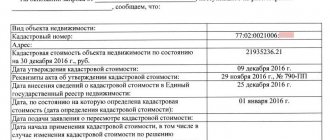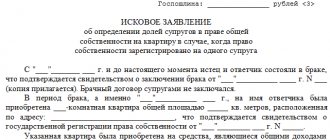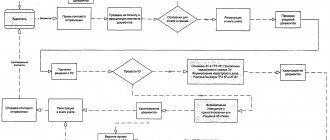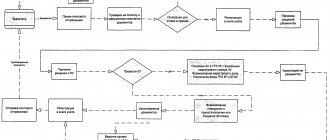The acquisition of real estate is an expensive purchase and a responsible business transaction, errors in the recording of which can be costly for the organization. In this article we will look at the features of accounting in 1C for the acquisition of real estate and its commissioning.
You will learn:
- what document and at what moment to accept real estate on the balance sheet;
- how to formalize the commissioning of real estate before registering ownership;
- when to start calculating depreciation on such property;
- on the nuances of accepting for accounting a fixed asset that has been in operation;
- how to reflect the payment of the fee for state registration of a real estate property and whether it is included in its initial cost;
- how to formalize the transfer of ownership of exploited real estate;
- at what point is VAT accepted when purchasing real estate?
Attention! The VAT rate has been changed from 01/01/2019 from 18% to 20% and from 18/118 to 20/120.
Step-by-step instruction
The organization entered into a purchase and sale agreement with PJSC Safmar Group for the purchase of real estate in the amount of RUB 3,540,000. (including VAT 18%).
Ownership of real estate is transferred after state registration.
On December 3, the supplier PJSC Safmar Group transferred the office premises under an acceptance certificate and issued an invoice. The premises are ready for use and put into operation. The useful life established by the former owner is 600 months. At the time of transfer, the premises had been in use for 100 months.
On December 4, the Organization paid a state fee in the amount of 22,000 rubles. and filed an application for re-registration of ownership.
On December 14, an extract from the Unified State Register of Real Estate was received on the transfer of the right to the property.
In accordance with the accounting policy, depreciation according to accounting and accounting records is calculated using the straight-line method for all fixed assets. Depreciation expenses are included in general business expenses according to the accounting system, and indirect expenses - in the accounting system.
Let's look at step-by-step instructions for creating an example. PDF
| date | Debit | Credit | Accounting amount | Amount NU | the name of the operation | Documents (reports) in 1C | |
| Dt | CT | ||||||
| Acceptance of real estate under the acceptance certificate | |||||||
| December 03 | 08.01.2 | 60.01 | 3 000 000 | 3 000 000 | 3 000 000 | Accounting for a non-current asset | Receipt (act, invoice) - Fixed assets |
| 01.08 | 08.01.2 | 3 000 000 | 3 000 000 | 3 000 000 | Commissioning | ||
| 19.01 | 60.01 | 540 000 | 540 000 | Acceptance for VAT accounting | |||
| Registration of SF supplier | |||||||
| December 03 | — | — | 3 540 000 | Registration of SF supplier | Invoice received for receipt | ||
| Transfer of payment to the supplier | |||||||
| December 03 | 60.01 | 51 | 3 540 000 | 3 540 000 | Transfer of payment to the supplier | Debiting from the current account - Payment to the supplier | |
| Payment of state duty for state registration of property rights | |||||||
| December 04 | 68.10 | 51 | 22 000 | Payment of state duty for registration of property rights | Debiting from a current account – Tax payment | ||
| 26 | 68.10 | 22 000 | 22 000 | Accounting for state duty | Manual entry - Operation | ||
| Transfer of ownership of real estate | |||||||
| December 14 | — | — | Registration of property rights in Rosreestr | Real estate tax: objects with a special taxation procedure | |||
| 01.01 | 01.08 | 3 000 000 | 3 000 000 | 3 000 000 | Transfer of ownership of real estate | Manual entry - Operation | |
| — | — | Changing the fixed assets accounting account in the fixed assets accounting accounts register | |||||
| Acceptance of VAT for deduction on fixed assets | |||||||
| December 30th | 68.02 | 19.01 | 540 000 | Acceptance of VAT for deduction | Generating purchase ledger entries | ||
| — | — | 540 000 | Reflection of VAT deduction in the Purchase Book | Purchase Book report | |||
| Depreciation calculation | |||||||
| January 31 | 26 | 02.01 | 6 000 | 6 000 | 6 000 | Depreciation calculation | Closing the month - Depreciation and wear and tear of fixed assets |
| Recognition of depreciation costs as part of administrative (indirect) expenses | |||||||
| January 31 | 90.08.1 | 26 | 6 000 | 6 000 | 6 000 | Recognition of depreciation costs as part of administrative (indirect) expenses | Closing the month - Closing accounts 20, 23, 25, 26 |
If the acceptance certificate of the apartment is not signed
The main law for drawing up a transfer form is the Civil Code of the Russian Federation, where Article 556 stipulates the need to draw up this document, otherwise the property will not be transferred o or disputes will arise.
In case of refusal of the seller for any reason to sign the act of acceptance and transfer of the apartment, it is necessary to terminate the purchase. An unsigned form does not complete the financial transaction and makes it illegal. Without it, problems may arise with the further registration of property rights, since many departments of the Russian Federation require this kind of documentation.
WARNING. You should not sign the acceptance form until the seller has fulfilled all obligations under the contract.
Example
Citizen Tikhonov AB concluded the sale of his studio apartment with citizen Lebedev BC During the registration process, the seller refused to sign the transfer form, referring to desire to receive the entire amount. In turn, Lebedev refuses to give up the remaining part of the money, since he was unable to formalize ownership rights due to the absence of part of the documentation.
The seller did not give in, and the agreement had to be terminated. All funds were returned to the buyer.
Comment from lawyer N.S. Belyaev:
If a party refuses to sign the act, then the other party must insist on resolving the dispute. The act of transferring the apartment will be required for the buyer to fully assume ownership rights. If the dispute is not resolved, then the parties have the right to go to court.
Acceptance of real estate under the acceptance certificate
Costs for the acquisition of office space, which will subsequently be taken into account as a fixed asset (FPE), are reflected in account 08.04 “Purchase of fixed assets” (1C chart of accounts).
Real estate objects suitable for exploitation are accepted into the fixed assets regardless of the moment of transfer of ownership rights and are accounted for at their original cost in a separate subaccount to the fixed assets accounting account (clause 52 of the Guidelines for accounting of fixed assets, approved by Order of the Ministry of Finance of the Russian Federation dated October 13, 2003 N 91n, clause 7 PBU 6/01).
The initial cost of the fixed assets is formed based on the actual costs of its acquisition, delivery and bringing the object to a condition suitable for use (clause 8 of PBU 6/01, clause 1 of Article 257 of the Tax Code of the Russian Federation).
Find out more about the formation of the initial cost in BU and NU
In 1C there are two options for registering the acquisition and accounting of fixed assets:
Standard option , which uses documents:
- capitalization of fixed assets - document Receipt (act, invoice) type of operation Equipment ;
- commissioning of OS - document Acceptance for accounting of OS ;
Simplified version , which uses a single document:
- capitalization and commissioning of fixed assets - document Receipt (act, invoice) type of transaction Fixed assets .
Learn more about Options for registering an OS in 1C, as well as the capabilities and limitations of each method
Real estate objects are reflected on the balance sheet of the organization at the time of receipt of the primary documents for its transfer, regardless of the date of transfer of ownership rights (clause 52 of the Guidelines for OS accounting, approved by Order of the Ministry of Finance of the Russian Federation dated October 13, 2003 N 91n).
When registering a property for which ownership has not yet been registered, you can choose any method, but you must take into account other restrictions provided for the simplified option.
In our example, there are no restrictions for using the simplified version, so we will formalize the acceptance of fixed assets for accounting using a single document Receipt (act, invoice) transaction type Fixed assets in the section Fixed assets and intangible assets – Receipt of fixed assets – Receipt of fixed assets.
The header of the document states:
- The method of reflecting depreciation expenses is the method of accounting for the costs of depreciation of fixed assets, selected from the directory Method of reflecting expenses .
In our example, depreciation costs will be taken into account as general business expenses, since the property will be used as an office.
- Assets accounting group - Buildings .
- OS location - location of operation of the OS, selected from the Division directory.
- The Objects are intended for rental checkbox is not selected: in our example, the purchased object will be used for our own needs.
The tabular section indicates:
- Fixed asset is a purchased property that must be created in the Fixed Assets directory .
In the NU for used assets, the useful life is indicated with the exception of the service life of the previous owner (clause 7 of article 258 of the Tax Code of the Russian Federation).
- Service life - useful life (USI) for an object. In this document, only one SPI can be established - the same for NU and BU.
- Accounting account - 01.08 “Fixed assets in the organization”, it must be set manually;
- Depreciation account - 02.01 “Depreciation of fixed assets accounted for in account 01” will be set automatically.
When posting a document, the fixed asset card in the Fixed Assets will be filled out as follows PDF. In this case, the depreciation group will be determined automatically depending on the service life specified in the document.
In the fixed asset card for used fixed assets, in the Depreciation group of the Classification section for this object, you must indicate the depreciation group established by the previous owner (clause 12 of Article 258 of the Tax Code of the Russian Federation). If necessary, you need to adjust the depreciation group of the fixed asset.
The remaining data in the OS card is filled in manually.
Postings according to the document
The document generates transactions:
- Dt 08.04.2 Kt 60.01 - formation of the initial cost of the asset.
- Dt 01.08 Kt 08.04.2 - acceptance of a real estate object into the OS, the ownership of which has not been registered;
- Dt 19.01 Kt 60.01 - acceptance of VAT accounting.
Documenting
The organization must approve the forms of primary documents, including the document on commissioning of the property and the form of the inventory card for further accounting of fixed assets. In 1C, the Certificate of Acceptance and Transfer of a Building (Structure) OS-1a and Inventory Card OS-6 are used.
The form of the Certificate of acceptance and transfer of a building (structure) OS-1a can be printed by clicking the Print button - Certificate of acceptance and transfer of OS (OS-1) of the document Receipt (act, invoice) . PDF
The Inventory card form in the OS-6 form can be printed by clicking the OS Inventory card (OS-6) in the fixed asset card (section Directories - OS and intangible assets - Fixed assets). PDF
Transfer of an EDS key: whose signature is considered?
As already mentioned, this process is not regulated by clear rules. Accordingly, the act of acceptance and transfer of digital signature is an internal agreement that does not extend beyond the company. External structures are not notified that a change has occurred, therefore, for them, everything remains the same. By default, it is considered that the document was signed by the owner of the digital signature if the key contains his personal data.
Even if there is a power of attorney drawn up in any form, responsibility for the use of the electronic signature still lies with its immediate owner. Being an analogue of a handwritten signature, the digital signature is automatically assigned to its designer, and only to him. From a legal point of view, the accusation of secretly using a key is tantamount to the accusation of stealing a hand. To prove his non-involvement in the preparation of this or that document, the manager will have to work hard.
Registration of SF supplier
To register an incoming supplier invoice, you must indicate its number and date at the bottom of the Receipt document form (act, invoice) , then click the Register . PDF
The Invoice document received is automatically filled in with the data from the Receipt document (act, invoice) .
- Operation type code : “Receipt of goods, works, services.”
Regardless of whether the Reflect VAT deduction in the purchase book by date of receipt , when this is done, no entries will be made to accept VAT for deduction.
Deduction of VAT on fixed assets is possible only through the document Generating purchase ledger entries .
Additional act to the apartment purchase and sale agreement
In most financial transactions that accompany the transfer of property rights from the seller to the new owner, additional paperwork is required that will confirm the This is a fact. This is the transfer form.
According to the Civil Code, Article 556 deals with the conduct of large contracts with the possibility of the seller transferring his property rights to the buyer. This is accomplished by the parties signing an act of acceptance of the transfer of the apartment upon purchase.
REFERENCE. A sample form can be downloaded from the Internet or you can use notary assistance, where everything will be completed by a trained lawyer.
If there are no other cases provided for by law or agreement, then the rights to real estate are considered transferred after the following conditions are met:
Of course, there is a direct need to draw up a transfer form for the property, after which it is necessary to continue registering property rights in the state gift registration authorities.
When conducting a purchase and sale transaction, the signed form will serve as additional evidence of the fact of transfer of the property to the new owner. Which will also reduce some of the risks of purchasing.
Transfer of payment to the supplier
At the time of transfer of the property, an account payable arose to the supplier under Kt 60.01 “Settlements with suppliers and contractors”.
The transfer of debt to the supplier is formalized by the document Write-off from the current account, transaction type Payment to the supplier in the Bank and cash desk - Bank - Bank statements - Write-off section.
This document can be created based on the document Receipt (act, invoice) by clicking the Create based on .
The document states:
- Amount — payment amount in rubles. according to the bank statement.
Postings according to the document
The document generates transactions:
- Dt 60.01 Kt - transfer of payment to the supplier.
Basic concept
The act of acceptance of the transfer of an apartment under a purchase and sale agreement is an accompanying document for concluding such transactions.
Its essence is manifested in the obligation to draw up and supplement the main purchase and sale agreement.
Lawyers readily answer citizens - why do they need an act of acceptance of the transfer of an apartment? The document allows you to complete and confirm the transfer of property rights on a legal basis from one owner to another.
The acceptance form must be completed according to the rules:
This form is transmitted together with other documentation confirming the new rights of the owner.
IMPORTANT. To avoid the risks associated with the registration process of property rights and the risks of transfer, it is necessary to insist on additional registration of the act of acceptance and transfer of the apartment upon sale even. If disagreements arise, the form will help resolve them and satisfy the interests of both parties.
how to cover the wiring on the wall
Payment of state duty for state registration of property rights
The transfer of ownership of real estate is subject to mandatory state registration (clause 1 of Article 130 of the Civil Code of the Russian Federation, clause 1 of Article 131 of the Civil Code of the Russian Federation, clause 1 of Article 164 of the Civil Code of the Russian Federation, clause 2 of Article 223 of the Civil Code of the Russian Federation).
A state fee is charged for registering property rights (clause 17 of Federal Law dated July 13, 2015 N 218-FZ). Its size is regulated by paragraphs. 22 clause 1 art. 333.33 Tax Code of the Russian Federation.
Payment of the state fee for registration of ownership rights to real estate is documented in the document Write-off from the current account transaction type Payment of tax in the Bank and cash desk section - Bank - Bank statements - Write-off.
The document states:
- Tax - State duty for state registration of rights, restrictions (encumbrances) of rights to real estate and transactions with it ( KBK 32110807020011000110 ).
- Type of liability - Tax ;
- Account - 68.10 “Other taxes and fees”;
- Types of payments to the budget - Tax (contributions): accrued / paid ;
- Budget levels - Federal budget .
Postings according to the document
The document generates transactions:
- Dt 68.10 Kt - the state duty has been paid in connection with the registration of property rights.
Reflection in accounting of state duty for registration of property rights of real estate
In the BU, the reflection of the state duty for registration of property rights depends on the moment of commissioning of the property:
- if the property is not put into operation: the state duty is included in the initial cost of the fixed assets (clause 8 of PBU 6/01);
- if the property is put into operation:
The state duty applies to expenses for ordinary activities (clause 5, clause 7 of PBU 10/99).
In NU, the duty is written off as a lump sum as part of other (indirect) expenses (clause 40, clause 1, article 264 of the Tax Code of the Russian Federation). The amount of the state duty is recognized as expenses on the date of its accrual (clause 1, clause 7, article 272 of the Tax Code of the Russian Federation).
Accounting for state duty costs is reflected in the document Transaction entered manually, transaction type Transaction in the section Operations – Accounting – Transactions entered manually.
State duty accounting:
- Debit - “General business expenses” (indirect cost account).
- Subconto 1 - cost division. To be completed only if records are kept by department. PDF
- Subconto 2 is a cost item for accounting for state duties in NU with the Type of expense - Taxes and fees . With this design of the cost item, expenses for state duty will be taken into account as part of indirect expenses for income tax, as taxes and fees at a time.
- Credit - 68.10 “Other taxes and fees.”
- Amount, Amount NU Dt - the amount of state duty.
Income tax return
In the income tax return, state duty expenses will be reflected only after the Closing of accounts 20, 23, 25, 26 in the Closing of the month .
In the income tax return, the cost of the state duty for registering property rights to real estate is reflected as part of indirect costs in Sheet 02 Appendix No. 2: PDF
- p. 040 “Indirect expenses - total”, including: p. 041 “amounts of taxes and fees...”.
Legal consequences
As already mentioned, this process is not regulated by clear rules. Accordingly, the act of acceptance and transfer of digital signature is an internal agreement that does not extend beyond the company. External structures are not notified that a change has occurred, therefore, for them, everything remains the same. By default, it is considered that the document was signed by the owner of the digital signature if the key contains his personal data. Even if there is a power of attorney drawn up in any form, responsibility for the use of the electronic signature still lies with its immediate owner. Being an analogue of a handwritten signature, the digital signature is automatically assigned to its designer, and only to him. From a legal point of view, the accusation of secretly using a key is tantamount to the accusation of stealing a hand. To prove his non-involvement in the preparation of this or that document, the manager will have to work hard.
Transfer of ownership of real estate put into operation
Registration of property rights in Rosreestr
If real estate is taxed at cadastral value, then it must be registered in the information register Property tax: objects with a special taxation procedure in the Main section - Taxes and reports - Property tax tab - link Objects with a special taxation procedure.
Transfer of ownership of real estate
After receiving an extract from the Unified State Register of Real Estate on the transfer of ownership of the property, it is necessary to transfer the initial cost of the property from account 01.08 “Real estate objects for which ownership rights are not registered” to account 01.01 “Fixed assets in the organization.”
To do this, we will create a document Transaction entered manually, type of operation Transaction in the section Operations – Accounting – Transactions entered manually.
To correctly generate the Asset Depreciation Sheet , you must also replace the Accounting Account in the information register of the Asset Accounting Account .
Transfer of the apartment according to the acceptance certificate
The final stage of the sale is the preparation of an apartment transfer deed for the property. The terms of this transfer of rights must be agreed upon in advance in the contract and completed upon signing the transfer form.
The consequences of the transfer of real estate are legal risks. After signing the above document, all transactions with the property are transferred to the new owner:
When signing the document, it is also necessary to reflect the following points:
In case of loss, you can find out how to restore the act of acceptance of the transfer of the apartment by contacting one of the participants in the financial transaction directly. Some of the copies are kept by the seller/buyer and, if they have saved contact details, they can help with the loss.
You can also restore the act of acceptance and transfer of the apartment in the following way:
IMPORTANT - when the act of acceptance of transfer of the apartment is signed upon sale. It is advisable for the new owner to sign the form after completely vacating the premises from the owners, its occupants and their belongings.
How to correctly draw up a transfer acceptance certificate
The rules for drawing up the form concern the competent and legally correct execution of the document. This will prevent controversial situations should they arise.
At the legislative level, there are no requirements for the content side of the form. Article 556 of the Civil Code of the Russian Federation specifies only one thing - to draw up a document in writing.
You can find out what the act of accepting the transfer of an apartment looks like by downloading a ready-made sample form on the Internet. The contents of the form consist of the following columns:
IMPORTANT. After drawing up the document, you must re-read it to eliminate any errors. There is no need to register the form with government agencies or have it certified by a notary. But you can turn to the latter for help in documenting financial transactions.
What documents are transferred to the buyer when selling an apartment?
The completion of a financial transaction is accompanied not only by the transfer of real estate to the new owner, but also by the return of all necessary documents to it. The new owner must have the following documents:
All of the above documents are displayed in a numbered list on the acceptance form.
Acceptance of VAT for deduction on fixed assets
When purchasing real estate, VAT is deductible if the following conditions are met (clause 2 of Article 171 of the Tax Code of the Russian Federation):
- OS must be used in activities subject to VAT;
- in stock - correctly issued SF (UPD);
- Fixed assets were accepted for accounting, including included in account 08.04 “Acquisition of fixed assets” (paragraph 3, paragraph 1, article 172 of the Tax Code of the Russian Federation, Letter of the Ministry of Finance of the Russian Federation dated July 4, 2016 N 03-07-11/38824, Letter Ministry of Finance of the Russian Federation dated November 18, 2016 N 03-07-11/67999).
Acceptance of VAT for deduction on purchased real estate is documented in the document Formation of purchase ledger entries in the section Operations - Closing the period - Regular VAT operations.
To automatically fill out the Purchased Assets , you must use the Fill .
Postings according to the document
The document generates transactions:
- Dt 68.02 Kt 19.01 - acceptance of VAT for deduction.
Purchase Book report can be generated from the Reports – VAT – Purchase Book section. PDF
VAT declaration
The VAT return reflects the amount of VAT deducted:
In Section 3 p.120 “Amount of VAT to be deducted”: PDF
- the amount of VAT accepted for deduction.
In Section 8 “Information from the purchase book”:
- invoice received, transaction type code "".
Depreciation calculation
Regulatory regulation
In accounting:
- The cost of fixed assets is repaid through depreciation, starting from the next month after the object is accepted for accounting and ceases to be repaid from the next month after disposal of the fixed assets or full repayment of its cost (clause 17, clause 21, clause 22 of PBU 6/01).
- Depreciation is calculated on the credit of account 02 “Depreciation of fixed assets” in correspondence with cost accounts. In our example, fixed assets are taken into account for general business needs, so the costs of accrued depreciation are taken into account as a debit to the “General business expenses” account.
In tax accounting:
- The cost of an asset is repaid through depreciation, starting from the next month after the commissioning of the asset, regardless of the date of state registration of rights to it, and ceases to be repaid from the next month after disposal of the asset or full repayment of its cost (clause 4 of Article 259 of the Tax Code of the Russian Federation , clause 5 of article 259.1 of the Tax Code of the Russian Federation).
- Accrued depreciation may be recognized as direct, indirect or non-operating expenses in accordance with accounting policies. In our example, depreciation is taken into account as part of indirect (other) expenses at a time on the last day of the accrual month.
Find out more about the features of calculating depreciation in 1C
Accounting in 1C
Monthly depreciation is calculated when performing the Month Closing procedure, the Depreciation and Depreciation of Fixed Assets operation in the Operations – Period Closing – Month Closing section.
In our example, the property was registered as a fixed asset and put into operation on December 3, therefore, depreciation in accounting and accounting records is accrued from January.
Postings according to the document
The document generates transactions:
- Dt Kt 02.01 - depreciation calculation.
Similarly, depreciation is calculated for the following months until the cost is fully repaid. When disposing of fixed assets, depreciation for the last month is accrued in the disposal document, for example, in the document Transfer of fixed assets .
Control
Depreciation calculation:
The monthly depreciation amount in 1C is calculated correctly.
In 1C, the amount of accrued depreciation can be viewed in the report Fixed asset depreciation in the section Fixed assets and intangible assets - Reports - Fixed asset depreciation statement. PDF
Documenting
The organization must approve the forms of primary documents, including documents for calculating depreciation, for example, an Accounting Certificate.
In 1C, you can print a depreciation calculation form using the Help-calculation of depreciation in the Operations section - Closing the period - Closing the month - button Help-calculation - Depreciation.
It presents the calculation of depreciation in BU and NU PDF separately, but with the ability to disclose the amount of depreciation by month of accrual.
Transferring an electronic signature to another person in practice
The provisions of 63-FZ are the same for all three types of electronic signature. However, the easiest way to do this is with a simple electronic signature. If necessary, everyone can provide the other with their login and password, say, for e-mail. This will not entail any consequences until the user begins to perform prohibited actions (for example, sending inappropriate materials).
In the case of qualified and unqualified EP, the consequences of the transfer may be more serious. Therefore, it makes the most sense for each company representative to acquire a personal electronic signature. The list of documents that employees can draw up using the director’s key must be clearly formulated. In other cases, an accountant or a representative of another position will be able to use his own key and be responsible for his own actions.








